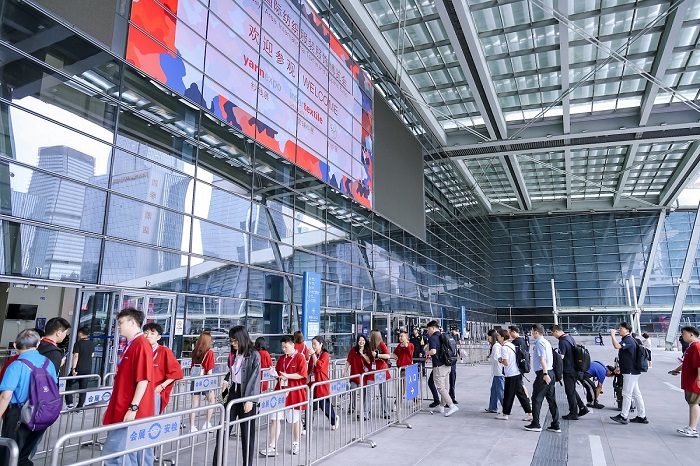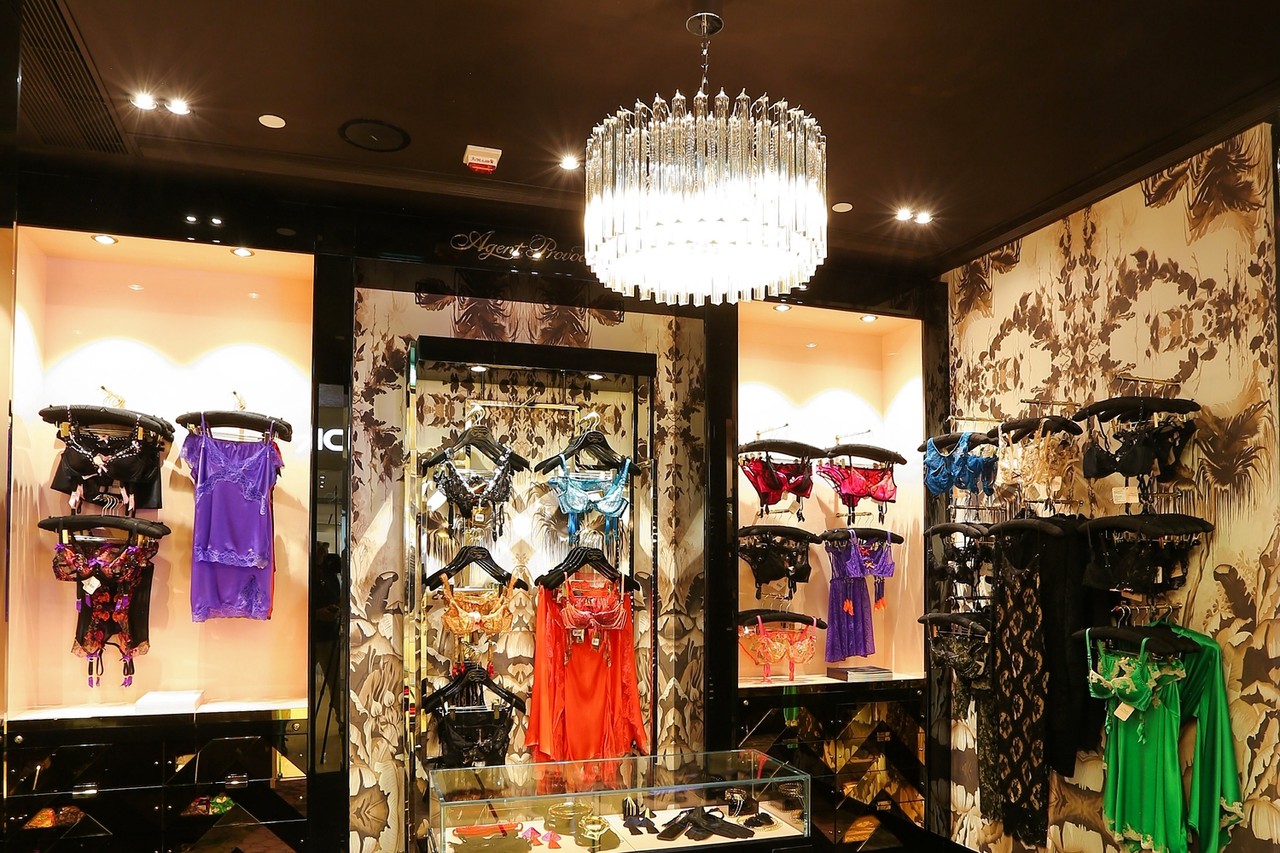FW
Workers at factories in Cambodia that produce clothing for the likes of Adidas, Nike and Puma are reportedly routinely faint due to exhaustion. More than 100 garment workers have reportedly fainted in two separate factories. Lacking access to nutritious, sanitary food, workers are highly susceptible to toxic fumes, dehydration and all the other poor conditions that they regularly encounter, which can easily tip them over the edge.
These sportswear brands are blamed for wages that currently do not satisfy basic needs or provide for a life with human dignity. Garment manufacturers say the faintings are not caused by malnourishment, toxic fumes, unsanitary food, poor working conditions or dehydration. They argue workers are looking for an early start to the Khmer New Year holiday, which runs from April 14 to 16. They say that when garment workers see one person faint they all follow suit because they don’t want to work.
Mass faintings are common in Cambodia, which has become an important manufacturing centre for many high street fashion brands. Garment manufacturing earns Cambodia more than $5 billion a year in revenue and employs some 6,00,000 people, many of them breadwinners for impoverished families in the countryside.
Garment makers have often complained of poor ventilation, strong chemicals and use of potent glue for footwear.
Benninger, a leading company developing technologically advanced textile finishing and tire cord solutions, will exhibit its Trikoflex drum washer and a Benninger-Küsters DyePad Basic at ITMA Asia + CITME trade fair, Shanghai, China to be held from June 16 to 20, 2014. Despite efforts by machine designers to reduce the liquor ratio, finishing of knitted goods in jet dyeing machines still requires large amounts of water and therefore, a great deal of energy.
Benninger has developed and implemented a continuous open width finishing process, that offers water and energy savings. This process makes it possible to lower CO2 emissions by nearly two thirds in comparison to the exhaust dyeing processes. The Trikoflex bleaching and washing plants and the Küsters DyePad are said to perfectly suit this type of application.
Washing on Benninger’s high efficiency Trikoflex drum washer with mechanically-assisted front and back washing reduces water consumption by more than 40 per cent compared to conventional washers. Additionally the Trikoflex has been specifically developed for tension sensitive textiles.
The DyePad Basic has been especially designed to suit the needs of Asian markets. It focuses on easy handling two swimming rollers ensure a maximum deflection potential and allow dyeing of knit and woven fabrics without any restrictions.
Benninger operates as a full-service solutions provider. The company plans and implements technologically optimised and individually designed process and system solutions.
www.benningergroup.com/en/
United States licensor Walt Disney has eliminated Pakistan from its list of 'Permitted Sourcing Countries' from April 1, after the country failed to satisfy the trading partner company of its intentions to improve its ‘poor governance standards’.
Sources claim that any importer or exporter, if found violating the ban on Pakistani goods would not only pay heavy penalty but may also get blacklisted from the list. The American giant’s decision has made a negative impact on Pakistan’s 200-million dollars exports of textile products. The company has also issued a notice to Bangladesh warning them of similar action against them. The company had put Pakistan on its watch list because of repeated incidents of factory fires in textile garment units.
However, the Bangladesh government managed to get a waiver by getting a placement in ILO/IFC ‘Better Work Programme’ that allows close monitoring of the country for social audit. Industry players are viewing this move as an irony with recent fire and building collapse calamities claiming several lives in Bangladesh.
Thewaltdisneycompany.com
The Woolmark Company's presence at the China International Clothing and Accessories Fair (CHIC) held from March 26 to 29, 2014 in Beijing was its biggest ever. Woolmark exhibited fabrics from the exclusive Woolmark Gold range, which made its debut in China last year and has been described as the world's first international gold standard of fabric for fine tailoring. Because of its extraordinary softness and exceptional performance, Australian merino wool has long been a key fiber for leading British and European men’s wear and women’s wear brands that sell in China.
The 22nd edition of CHIC covered segments like men’s wear, women’s wear, kids’ wear, leather/fur, down jackets and accessories. Among the exhibits were fiber preparation machines, knitting machines, spinning machines, weaving machines, non-woven and industrial machines, knitted and elastic textile fabrics, mercerized and reflective fabrics, and yarns like wool, elastic, hemp and cotton.
About 83 per cent of all Australian merino wool that is produced is exported to China. Traditionally, the vast majority of this wool was processed and re-exported. Yet today around 32 per cent of Australian merino wool stays within the Chinese market. Chinese consumers and textile companies are becoming increasingly aware of the fiber's natural inherent benefits.
www.chinaexhibition.com
In keeping with its initiative of creating awareness about wool, Australian Wool Innovation (AWI) is helping Vietnamese manufacturers in its wool products. Vietnamese companies are not familiar with wool but with the help of AWI, players are working on creating a range of products. This will help the Australian wool industry reduce its reliance on China, as nearly 75 per cent of the Australian wool is exported to China.
AWI organized training programs for the Vietnamese manufacturers to explain them in detail about wool’s properties, benefits and features for manufacturing and producing garments. Next step was introducing manufacturers to suppliers of Australian wool yarns and encouraging companies to set up their own spinning facilities and ultimately their own scouring and top making plants in Vietnam. Vietnamese producers are importing yarn from China, India, Italy and Germany but with an increase in domestic production, it can cut down on import costs.
AWI is now in discussion with Vietnamese and six foreign companies to invest in setting up a wool weaving plant in Vietnam. Manufacturers from Vietnam would be introduced to the first delegation of 10 companies from Japan, who will be traveling to Vietnam next month. Following Japanese buyers’ visit, will be a group of Korean retailers and in future AWI plans to follow this with buyers from Europe and the US too. AWI has been taking various initiatives by investing in R&D on and off farm, marketing the product worldwide to ensure demand and maintain strong pricing.
Over the last quarters, manmade fibre and especially polyester prices have been under marked pressure. Analyst Reto Amstalden from Swiss Helvea (research, sales and trading) has said in an article that the reason behind deteriorating fibre production may be due to a slowdown in the strong investment cycle of manmade fibre production equipment seen over the past few years.
Amstalden points out that oil supply has been flat this situation suggests increasing oversupply of manmade and polyester production capacity which made conversion (profit) margin of polyester filament producers to fall in the negative. According to him, the overcapacity situation may become more severe, as a significant amount of new production capacity is presently and in coming quarters coming on stream.
According to a publication of PCI Fibres in March 2014, China’s capacity of polyester filament was 31.3 million in 2013, which was more than global mill consumption of 29.7 million tons. Global consumption of polyester filament increased 6 per cent as against 2012. However, China’s polyester filament capacity continued to increase 17 per cent during 2013, and a further rise of 8 per cent is expected in 2014, outperforming the consumption of polyester filament. Amstalden concludes this might hamper the capacity utilisation rate for Chinese producers from around 80 per cent in 2012, to 70 per cent in 2014-15, taking into account that China accounts for about 65 per cent of global manmade fibre production.
According to PCI, China's capacity in nylon filament is growing more quickly than global mill consumption. It will account for around 70 per cent of the world nylon filament demand within the next two years, if no ratoinalisation of capacity takes place.
H&M and Inditex have decided to eliminate ancient and endangered forests from all their rayon and viscose clothing. The world’s largest clothing brands have developed new purchasing commitments in partnership with award-winning environmental organization Canopy as part of an initiative to address the growing impacts of the clothing industry on the world's forests, biodiversity and climate. Sustainability brand Loomstate is also backing the ‘Fashion Loved by Forest’ campaign.
Canopy research has found that threatened forests are routinely making their way into clothing. Rayon, viscose, modal and other trademarked fabrics are increasingly made from the world's most endangered forests, from the tropical rainforests of Indonesia to the great northern Boreal Forests. Globally rare forests are cut down, pulped and spun into suit and jacket linings, dresses, skirts, T-shirts and tank tops.
Canopy believes that dissolving pulp/viscose industry is poised for continued ambitious expansion and poses an increasing risk to threatened forest ecosystems around the world and commitments by these brands will help curtail the problem and build solutions.
As per estimates, last year, an estimated 70 million trees were cut for fabric production, a number projected to double in the next 20 years. The last intact rainforests of Indonesia are falling at an alarming rate and critically endangered species may soon vanish if not conserved on time.
www.canopy.org
With low priced raw silk imports from China to India on the constant rise and negatively impacting the prices of cocoons and raw silk, Indian government has decided to extend anti-dumping duty on raw silk imports from China. The move comes after farmers requested the government to levy anti-dumping duty against China and also to support and boost domestic silk production.
China is the biggest exporter of raw silk to India accounting for almost 99 per cent of exported raw silk worth $224.5 million (Rs 1,351.9 crores) as of 2012-13. Raw silk imports from China grew at a compounded annual growth rate of 7 over per cent during the last 12 years from 2000-01. India had imposed anti-dumping duty on imports of Mulberry raw silk of 2A grade and below from China in January 2003, which remained in force until January 2008 and was then extended till January 2014.
Experts say, government needs to take steps to protect domestic silk manufacturing industry against cheap imports. According to them a periodic review of the anti-dumping policy is necessary to safeguard interests of both sericulturists and export manufacturers. There is a need to bridge a gap between the weaver cluster and raw silk production units. Investments in upgrading the segment and establishing R&D centers to empower the weavers with latest ways to increase silk productivity, quality and new designs.
The segment is estimated to provide employment to over 7.6 million people across 51,000 villages operating over 3.28 lakh handlooms and over 45,800 powerlooms with over 8.14 lakh weavers in the country.
The Association of Italian Textile Machinery Manufacturers (ACIMIT) plans to conduct a seminar for Russian manufacturers to share information about the Italian textile machinery technology. Around 13 Italian companies will participate in the technology seminar, including ACIMIT associate members such as Aigle, Bellini, Bianco, Color Service, Ferraro, Itema, Marzoli, Savio and SSM Giudici. The seminar is being organized at a time when Russian authorities have initiated pilot projects designed to modernise existing technology and enhance the offering of products available in the local market. The seminar would provide a platform to both the countries to further reinforce their existing relations between Russian textile producers and Italian technology suppliers.
It may be recalled that ACIMIT had recently published the second edition of Green Guide which gives a summary of the actions taken by Italian textile machinery firms in the field of sustainability, in terms of savings resources used during the textile production process. ACIMIT represents an industrial sector comprising around 300 companies and producing machinery to an overall value of €2.3 billion, with exports amounting to 84 per cent of total sales. To promote the Italian textile machinery knowledge throughout the world, ACIMIT organizes a wide range of promotional activities such as exhibitions, technical seminars, missions in Italy and abroad, and so on in collaboration with ICE (Italian Trade Commission).
The trade war between the US and China has opened up a big opportunity for India to increase exports of manmade textiles. India’s manmade fiber exports have been stagnating for the past four years. Exports grew by a marginal 1.9 per cent in fiscal ’19. The trade war has opened up an opportunity, which can help stagnant exports grow by ten per cent to 12 per cent in one-and-half years.
On the other hand, China exports $7 billion worth of manmade textiles to the US. Even if India manages to grab a portion of these exports, and manage to grow by ten per cent, the $6 billion manmade textile exports can move up to $6.6 billion. However to do this the industry needs support. Countries like Vietnam and Bangladesh have signed free trade agreements and preferential trade agreements with some of the key markets like the US and the Europe. Indian industry does not enjoy these benefits. An inverted duty structure for the import of raw materials and finished products is one of the main factors that impede the production and exports of manmade textiles. While raw materials attract an import duty of around 18 per cent, finished products attract only five per cent. Duty-free import of apparels from Bangladesh has been rising in recent months.












